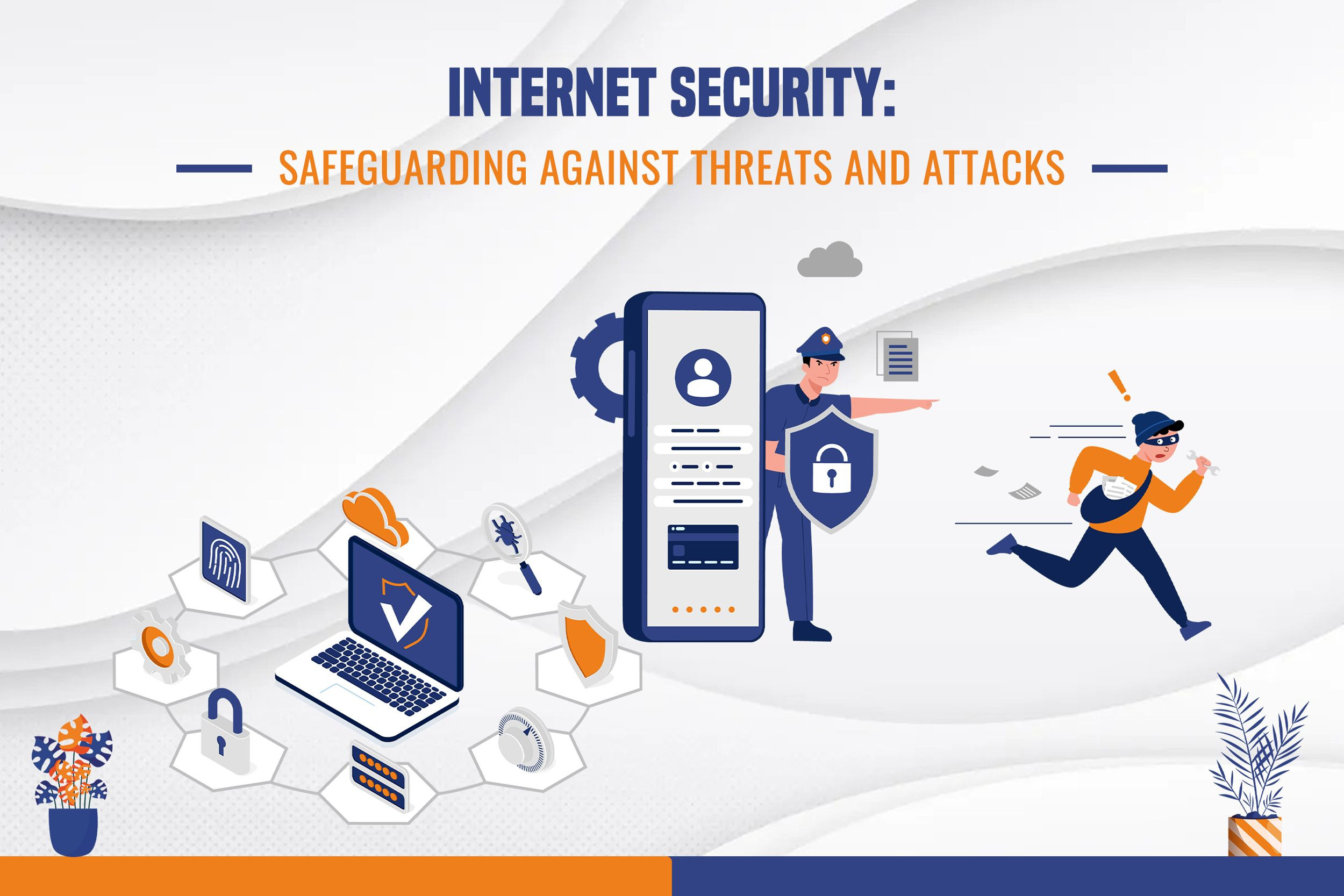
Internet Security: Safeguarding Against Threats and Attacks
In today's digital age, where our lives are intertwined with technology, ensuring internet security has become more crucial than ever before. The internet offers a wealth of opportunities, but it also exposes us to various threats and attacks. However, nowadays organizations understand the importance of safeguarding your online presence and thus offer comprehensive solutions to protect your sensitive information. In this article, we will explore the different types of threats and attacks prevalent in the digital landscape and share expert tips on how to mitigate them effectively.
Understanding Common Threats & Taking Protective Measures
1. Malware Infections
Malware, short for malicious software, refers to any software designed to harm or exploit computer systems. It includes viruses, worms, ransomware, and spyware. These malicious programs can infiltrate your devices through various channels, such as infected websites, email attachments, or software downloads. Once infected, your data, privacy, and even financial stability can be at risk. It is crucial to deploy robust antivirus software and regularly update your systems to counter malware threats effectively.
2. Phishing Attacks
Phishing attacks are deceptive attempts to trick individuals into revealing sensitive information, such as login credentials or financial details. Cybercriminals often impersonate reputable organizations or individuals, luring victims into clicking on fraudulent links or sharing confidential data. Stay vigilant and verify the authenticity of emails, websites, or messages before providing any personal information. Educating your team members with proper Technical Training Courses about phishing techniques and adopting email filtering systems can significantly reduce the risk of falling victim to these attacks.
3. Data Breaches
Data breaches occur when unauthorized individuals gain access to sensitive information, usually stored in databases or online platforms. The stolen data can include personal details, credit card information, or even trade secrets. Implementing strong encryption measures, regularly monitoring your systems for any suspicious activity, and training your employees to handle data securely are essential steps to prevent data breaches.
4. Denial of Service (DoS) Attacks
DoS attacks aim to disrupt the normal functioning of a website or network by overwhelming it with excessive traffic or requests. This results in the target system becoming slow or inaccessible to legitimate users. To protect against DoS attacks, investing in scalable hosting solutions, implementing firewalls, and utilizing intrusion detection systems can help maintain the availability and stability of your online services.
5. Social Engineering
Social engineering attacks exploit human psychology to manipulate individuals into revealing confidential information or performing certain actions. Common techniques include impersonation, pretexting, or baiting. Educate your employees about these tactics and encourage a culture of skepticism. Implementing strict access controls, multi-factor authentication, encouraging Technical Learning, and conducting regular security awareness training sessions can minimize the risk of falling victim to social engineering attacks.
Best Practices for Internet Security
Now that we have identified the common threats, let's explore some best practices to safeguard your online presence:
- Keep Software Updated
Regularly updating your operating systems, antivirus software, and other applications is crucial for maintaining strong security. Software updates often include important security patches that address known vulnerabilities, making it harder for attackers to exploit your systems.
- Use Strong, Unique Passwords
Employing strong passwords that contain a combination of uppercase and lowercase letters, numbers, and special characters is essential. Avoid using easily guessable passwords and refrain from reusing the same password across multiple platforms. Consider using a reliable password manager to securely store your passwords.
- Enable Two-Factor Authentication (2FA)
Two-factor authentication provides an additional layer of security by requiring users to verify their identity through a secondary method, such as a unique code sent to their mobile device. Implementing 2FA significantly reduces the risk of unauthorized access, even if your passwords are compromised.
- Encrypt Sensitive Data
Encryption converts your data into an unreadable format, making it indecipherable to unauthorized individuals. Implementing encryption protocols for sensitive information, both during transmission and storage, ensures that even if the data is intercepted, it remains inaccessible to attackers.
- Regularly Backup Your Data
Creating regular backups of your critical data is essential in case of a security breach or system failure. Back up your data to secure, off-site locations or utilize cloud storage services with strong encryption measures. Regularly test your backups to ensure their integrity and accessibility when needed.
- Educate and Train Employees
Employees are often the first line of defense against cyber threats. Conduct regular Technical Program Management Training sessions to educate your team members about internet security best practices, including identifying suspicious emails, recognizing phishing attempts, and reporting potential incidents. Promote a security-conscious culture within your organization.
- Employ Web Application Firewalls (WAFs)
Web application firewalls act as a protective barrier between your website and potential attackers. They analyze incoming traffic and filter out malicious requests, effectively mitigating common web-based threats such as SQL injections or cross-site scripting attacks.
- Regularly Monitor and Audit
Implement a robust monitoring and auditing system to detect any anomalies or unauthorized activities within your network. Encourage in-depth Technical Learning within teams. Timely detection and response can significantly minimize the impact of security incidents.
Final Words
In a rapidly evolving digital landscape, safeguarding against internet threats and attacks is crucial for individuals and organizations alike. By following the best practices outlined in this article, you can fortify your online security and protect your sensitive information. Remember, internet security is an ongoing process, requiring constant vigilance and adaptation to emerging threats. Stay informed, implement robust security measures, and prioritize the safety of your digital presence.
